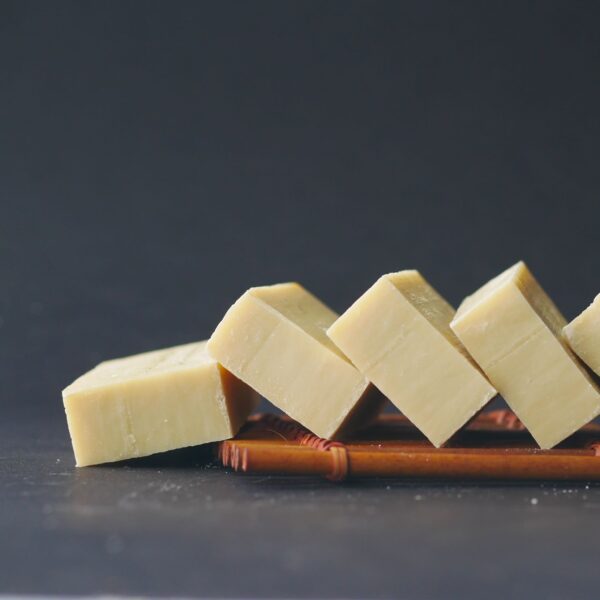Ferrocyanide is an inorganic compound composed of iron and cyanide ions. Various forms of ferrocyanide include ferric ferrocyanide, potassium ferrocyanide, and sodium ferrocyanide. Ferrocyanides are used in cosmetics and other personal care products. The most commonly used form of ferrocyanide in cosmetics is ferric ferrocyanide, an iron-based inorganic colorant known as Prussian blue. It is an intense blue pigment that provides a vibrant and long-lasting blue shade to cosmetic products.
What is Ferrocyanide?
The chemistry of ferrocyanide involves the combination of iron and cyanide ions. It is represented by the chemical formula (Fe(CN)6)4-. In this compound, the iron atom has a positive charge (Fe2+) and is surrounded by six cyanide ions (CN–), each with a negative charge. Ferrocyanide is a coordination complex in which the central iron atom is coordinated with the cyanide ligands. The cyanide ligands form a hexagonal structure around the iron atom, creating a stable complex.
Source: Wikipedia
How is Ferrocyanide Produced?
Ferric ferrocyanide is synthesized chemically by the mixing of ferric (ferrous) and hexacyanoferrate ions with different oxidation states of iron atoms: either Fe3+ + [FeII(CN)6]4− or Fe2+ + [FeIII(CN)6]3−.
The synthesis of potassium ferrocyanide involves reacting sodium ferrocyanide with potassium chloride in a mole ratio of 1.1-1.2 to obtain the coarse potassium ferrocyanide. After adding potassium chloride (10-20 wt.%), the finished product contains a high percentage of potassium ferrocyanide (98.5% or more).
Applications in Personal Care and Cosmetics
Prussian blue is frequently used in eyeshadows, eyeliners, nail polishes, and other makeup formulations where a blue color is desired. Ferrocyanide also acts as an anti-caking agent, as described in the table below.
| Function | Application |
| Colorant | Ferric ferrocyanide allows cosmetic manufacturers to achieve a shade of blue that is not easily obtained with other pigments or dyes. Ferrocyanide is stable and insoluble in water. It does not fade or change over time. Ferrocyanide can be dispersed in oils and other ingredients commonly found in cosmetics, allowing for easy incorporation into various product formulations. |
| Anti-Caking Agent | Anti-caking agents prevent powders or granulated materials from forming lumps or clumps. In cosmetics, anti-caking agents are used to improve the flowability and texture of powdered products. |
Product Examples
| Type | Examples |
| Color Cosmetics | Eye shadows, mascaras, nail polishes, lipstick, lip glosses, body & face paints |
| Powder Cosmetics | Loose powders, eye shadows, blushes |
Properties of Ferrocyanide
| Ferric Ferrocyanide (Prussian Blue) | Potassium Ferrocyanide | |
| Physical Form | Powder and crystals | Powder and crystals |
| Color | Deep, neutral, indigo blue with a cobalt undertone. | Lemon yellow/orange-red |
| Odor | Specific | Odor |
| Molecular Weight | 859.2 g/mol | 368.35 |
| Appearance | Blue powder/crystals | Light yellow, crystalline granules |
| pH (5% Aqueous) | – | ~ 6 |
| Density | 1.83 g/cc | 1.86 g/cc |
| Melting Point | 1539°C | 300°C |
| Hydrates | Hydrates present | Trihydrate: K4[Fe(CN)6]·3H2OAnhydrous: K4[Fe(CN)6] |
| Solubility | Insoluble in water | Trihydrate 28.9 g/100 mL |
| Storage Temperature & Conditions | Dry, cool, dark and well-ventilated place | A dry, cool and well-ventilated place |
Typical Formulations
Crayon Eye Shadow
| Phase | Ingredients | %wt |
| A | Castor Oil | 31.5 |
| Beeswax (White Bleached Beeswax) | 4.5 | |
| Candelilla Wax (Candelilla Wax Refined Flakes) | 4.5 | |
| Myristyl Myristate (Crodamol MM) | 4.5 | |
| Octyl Palmitate | 4.5 | |
| Isopropyl Palmitate (and) Lanolin Oil (Isopropylan 33) | 4.5 | |
| Ozokerite Wax (Ozokerite Wax 77W) | 5 | |
| Shea Butter (Shebu Refined) | 6 | |
| Isopropyl Myristate | 3 | |
| Antioxidant & Preservatives | q.s. | |
| B | Gemtone@ Sapphire G011 (Mica (and) Titanium Dioxide (and) Ferric Ferrocyanide (and) Carmine) | 32 |
Source: Google Patents
Liner Cosmetics
Preparation 1
| Component | Composition |
| Potassium ferrocyanide trihydrate (10% aqueous solution) | 1 part by weight |
| Ferric sulfate monohydrate | 2 parts by weight |
The solution is centrifuged to remove a supernatant liquid. The solution is washed and then concentrated under heating to obtain an aqueous Prussian blue dispersion with a Prussian blue concentration of 12 wt%.
Preparation 2
| Component | Composition |
| Aqueous Prussian blue dispersion from preparation 1 | 91.2% |
| Lauryldimethylaminoacetic acid betaine | 8.8% |
The solution is further stirred for 60 minutes. Afterward, the solution is centrifugally separated and then heated to remove water, obtaining dispersant-adsorbed powder. At this time, pigment content in the dispersant-adsorbed powder is 80.5 wt%.
Preparation 3
| Component | Composition |
| Dispersant absorbed powder from preparation 2 | 32. % |
| Sorbitan sesquioleate | 7.0% |
| P.O.E. nonyl phenyl ether | 2.0% |
| Soybean phospholipid | 4.0% |
| Light liquid iso-paraffin | 55.0% |
The solution is stirred for 60 minutes and then subjected to centrifugal separation to remove coarse particles.
Source: EPO
Ferrocyanide Formulation Considerations
| Physical Forms | Powder, crystals |
| Stability | Heat: StablepH: Stable |
| Dosage | 0.05-0.2% |
| Interaction with Other Components | Ferric ferrocyanide is a chelating agent with a strong binding affinity for thallium, cesium, and other metal ions. |
Safety and Regulatory Considerations
| FDA Information | In the United States, ferric ferrocyanide is listed as an approved color additive under the FDA’s regulations. It is assigned the color additive code CI 77510. Ferric ferrocyanide is safe for use in coloring externally applied cosmetics, including cosmetics applied to the eye area, in amounts consistent with good manufacturing practice. |
| EU Information | Ferric ferrocyanide and Ferric ammonium ferrocyanide are CI 77510 in the Cosmetics Directive of the European Union (Annex IV, Part I). They may be used in all cosmetics and personal care products if they are free from cyanide ions. |
Safety and Toxicity of Ferrocyanide
Although ferrocyanide compounds are derived from cyanide, which can be toxic in certain forms, ferrocyanides are considered safe for cosmetics because they are insoluble in water and do not release harmful cyanide ions.
Identification Numbers
| Ferric Ferrocyanide (Prussian Blue) | Potassium Ferrocyanide | |
| IUPAC Name | iron(2+);iron(3+);octadecacyanide | tetrapotassium;iron(2+);hexacyanide |
| CAS Number | 14038-43-8 | 14459-95-1 |
| EC Number | 237-875-5 | 237-722-2 |
| CI Number | 77510 | – |
Fun Facts About Ferrocyanide
- Prussian blue was one of the first synthetic pigments discovered in the early 18th century.
- Ferric ferrocyanide is known for its stability, which means it doesn’t easily degrade or change color when exposed to light, heat, or other environmental factors. This stability is advantageous in cosmetics as it helps maintain the intended color of the product over time.







